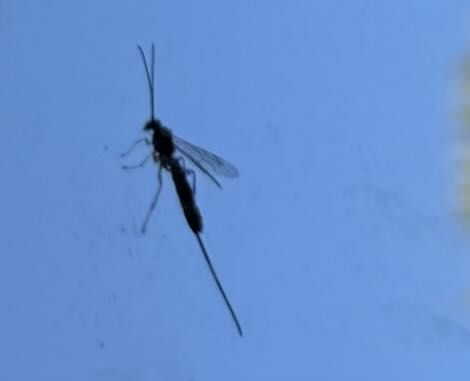Ichneumon Wasp
Scientific Name: Ichneumonidae (genus and species vary greatly)
Order & Family: Order: Hymenoptera, Family: Ichneumonidae
Size: Typically 3 mm to 40 mm (0.12 to 1.6 inches) in body length, but some can be much longer, especially with the ovipositor. The ovipositor in the image appears quite long.

Natural Habitat
Widely varied depending on species, but generally found in terrestrial environments, including forests, meadows, gardens, and agricultural areas, wherever their host insects are present.
Diet & Feeding
Adult Ichneumon wasps typically feed on nectar, honeydew, and sometimes pollen. The larvae are parasitoids, meaning they develop by feeding inside or on other insects (hosts), eventually killing them.
Behavior Patterns
Female Ichneumon wasps use their prominent ovipositor to lay eggs on or into the host insect (often larvae or pupae of other insects, particularly moths, butterflies, beetles, and sawflies). The larvae emerge and consume the host. Many species are solitary. They are not typically aggressive towards humans.
Risks & Benefits
Ichneumon wasps are highly beneficial insects for ecosystems and agriculture. They are important natural enemies of many pest insects, helping to control their populations without the need for chemical pesticides. This makes them valuable in biological pest control. They pose virtually no risk to humans; they do not sting in defense or have venom that affects humans, and their ovipositor is used for egg-laying, not defense.
Identified on: 9/23/2025